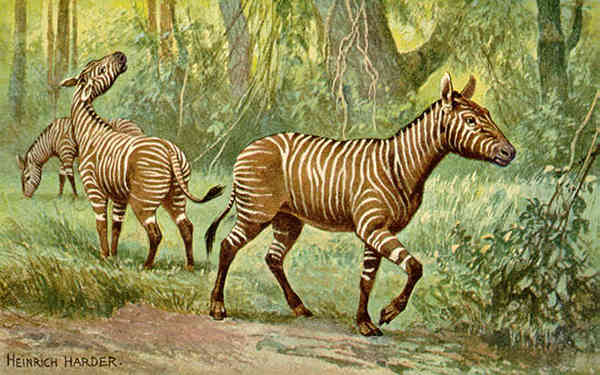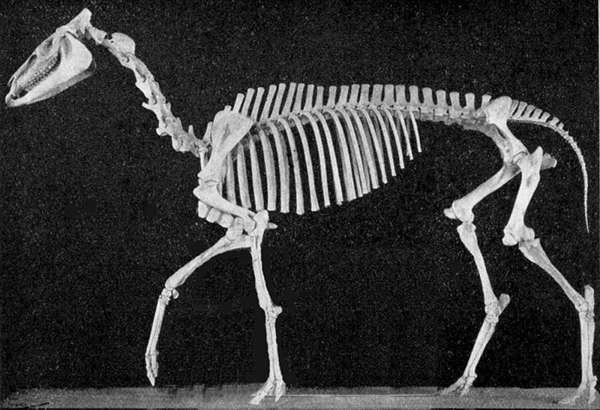
The size of a modern pony, this is one of the larger equidae ancestors. They were found in the forested areas of North America during the middle Miocene (17 – 11 million years ago).
The Lowdown
This species was named by paleontologist Joseph Leidy who named them Hypohippus (or ‘low horse’) for the low profile of some of their teeth. It was later discovered based on skeletal remains these animals had long faces, necks & bodies and very short little legs. The term ‘low horse’ was appropriate on a number of levels.
When compared to the long-legged domestic horse of today they are quite low indeed.

A Forest Lover
This species was thought to be a highly specialized forest browsing horse. They walked on three-toed feed that would have been well adapted for soft forest floors.
Family Tree
The equidae family has a large and complicated tree and it’s branches are still subject to controversy. While these extinct species are part of the equidae family they may not actually be related to your horse of today. Before you go be sure to meet the also extinct Quagga & Eohippus.